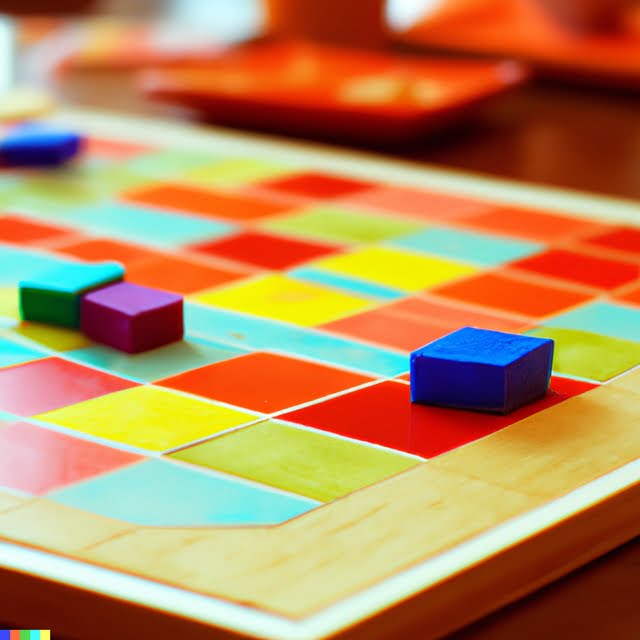Introduction
Risk is a board game designed by Albert Lamorisse and first published in France in 1957. It has become one of the world’s most popular war strategy games and is recognized as a classic of the genre. Players compete against each other to conquer territories, forge alliances, wage wars and ultimately achieve global domination.
The goal of Risk is to control the most continents and islands on the game board at the end of the game. To achieve this, players must move their respective armies around the risk board strategically, earning bonuses for those who control all available continents during their turn. Throughout, players must build up their armies to attack and defend against hostile forces while being mindful about allying with other contestants for mutual protection or gain. The game also encourages diplomacy between adversaries using bidding and negotiation tactics that can result in league treaties or covert smuggling agreements. By playing out unique strategies over a series of turns, players quickly discover that achieving total world domination requires more than just sheer force – cunning minds and shrewd wit can turn an underdog race for power into an unexpected victory!
How to Play
1. Gather your equipment. You will need one Risk board, six dice (three of each color), over 120 playing pieces in several colors, and a deck of cards for each player.
2. Randomly decide which players will be assigned to which color pieces. Players should also be gifted cards that correspond with their color pieces.
3. To begin the game, take turns placing all the playing pieces on their designated territories on the Risk game board. It is important that players strategize where they place their armies”this can make or break a successful victory throughout the game!
4. After placing your armies on the board, roll two dice to decide who gets the first turn and play proceeds clockwise around the board afterward.
5. On your turn, move your armies into surrounding territories as well as engage in battles to conquer other territories occupied by opposing players’ armies or by unoccupied territories marked by “neutral” forces represented by special cards furnished at the beginning of each battle session.
6. Combat involves rolling both of your own dice and those of attacker/defender which potentially gives an upper hand to either side based on differing rolls as determined through sum total comparison between both forces involved in battle for up to three rounds with any ties going automatically in favor of defender before noncombatant forces are removed from field ” if applicable – before attacker is announced winner assuming necessary conditions met; Any army cannot have more than seven (7) playing pieces* per region yet only five (5) maximum units may participate in any single battle after declaring attack; it is possible for even one unit alone to win some conflicts during actual gameplay thereby making strategies with respect to attacking enemy elements significantly more critical when preparing for upcoming skirmishes against opponents under consideration
(*Violation results in complete forfeiture and end loss.)
Tips for Winning at Risk
Risk is a classic board game that has been around since 1957. It involves several players competing to conquer the world in a turn-based game of diplomacy, military strategy and luck. With different versions available, the Risk board game rules differ slightly from one version to another. However, these tips can help any player win at the game no matter which version they are playing:
1) Build defensive troops early on in the game: Building extra troops near potential attack spots makes it more difficult for opponents to launch successful invasions. Investing in solid defense goes a long way toward keeping your territories safe for longer periods of time.
2) Consider every move you make carefully: Every move in Risk should be calculated and thoughtful, as making a random or hasty move can quickly ruin your chance at victory due to an unexpected counterattack from an opponent or by opening yourself up to being attacked on multiple fronts.
3) Try to form defensive alliances with other players: Aligning with other players temporarily can help protect you while allowing those who have already gained enough ground to weaken each other and leave more resources up for grabs later on in the game.
4) Take advantage of bad rolls by opponents: When other players fail their dice rolls during an attack, take advantage of the situation and push forward with your own forces before they get a chance to rebuild theirs. In certain versions of the games like Axis & Allies, certain portions of turns are conducted simultaneously so that two parties may end up attacking one another at once; use this to your benefit if you roll better than your opponent as you’ll have more troops left over than they do at full strength.
5) Plan ahead but be willing to adapt your strategy accordingly: A flexible strategy will go a long way towards helping you win at Risk as it helps prevent unforeseen circumstances such as poor die rolls or sudden changes in opponents’ strategies from ruining all of your planning efforts. Also be sure to think several turns ahead so that even if something unexpected happens you can still have a plan B ready if needed and stay proactive in conquering new territories while attempting to defend what you’ve already taken.
Videos
Risk is a strategic board game that involves moving around pieces on a board to conquer different areas. Players are given an army of pieces and must attempt to capture and occupy territories, each granting the player a certain number of points if successful. The game is played in rounds, with the first player rolling dice that let them know how many armies they can move during their turn. Players will typically build up armies in their own territory or strategically move them into enemy territory in an attempt to take over new land. Combat ensues when armies are in opposing territories; during combat, players roll dice and the higher number wins. Whenever a player loses a battle, some of their pieces must go back to their home base”or off the board entirely if all pieces from one army have been defeated. The goal of Risk is to gain domination over all territories on the map by controlling more than half its territories and having more total points than any other players combined.
In addition to familiarizing yourself with the rules of Risk, videos can be great educational tools for mastering this classic strategy game. There’s an abundance of tutorials, playthroughs, and other helpful content available online featuring popular game tactics, rules explanations, and expert winning strategies so you can become efficient with your moves and make your way towards victory! Whether you’re looking for simple advice or detailed instruction to guide you while playing, replay videos can help you get comfortable handling every situation that comes your way during Risk matches. They also give new players insight into how experienced gamers think about their strategies so they can develop their own techniques over time and become fluent in the language of Risk terminology quickly.
Risk Variations
The popular board game Risk is known for its complex strategy and competitive elements. Many have created variations on the traditional ruleset in order to mix up play styles. These alternative rulesets vary from subtle changes to extreme differences that create a whole new experience.
Within these variants, several popular strategies exist. The classic game invites players to try strategies such as Expansion, Aggression, Fortification or even Diplomacy if they are playing against human opponents. In general, these strategies remain consistent regardless of the rule variation being played.
However, variations on the rule specific to a particular version of the game can create advantages or disadvantages for certain strategies over others; as an example, some rulesets provide extra reinforcement units or favor large stacks of armies while restricting certain kind of card combinations. As such, players may need to adjust their strategy depending on which variant is being played in order to gain an advantage over their opponents.
Apart from specific strategies related to the rule adjustments, knowing how people tend to play different versions of Risk can also be beneficial when competing with someone with extensive experience in a single variant. Some skilled players rely heavily on defending territories that give them geographical benefits when combined with other pieces and adjusting too late could be costly in such cases.
Overall, there are many ways in which one’s strategy must be modified when venturing into various Risk variants outside the base game and understanding both the differences within each individual component as well as what most experienced players do when playing it remains a prime factor for gaining victory.
Online Resources
Engaging in conversations about Risk board game online is a great way to further your understanding of the game. With so many websites, blogs, and forums dedicated to the strategy game, you have many options for where to start.
To begin your exploration, search for game-specific forums on forums like Reddit or BoardGameGeek. When participating in these conversations it’s best to read through the guidelines set by each site or forum before posting yourself. Many forums suggest you include a short personal introduction with your post so other users can get an idea of who you are and where you’re coming from. Once you’ve posted within a forum, be sure to come back and follow up on any responses that are offered to your posts since dialogue tends to be what drives conversation forward.
Another option for engaging in conversation around Risk boardgame is seeking out websites and blogs devoted specifically to the game itself. Here, you’ll likely find specific information about how to play the game as well as detailed accounts of other players’ experiences with it. Keep in mind that some content will be more valuable than others – always evaluate sources carefully before taking advice from them! Additionally, consider reaching out directly on social media platforms such as Twitter or Instagram where people post pictures of their boards or share commentary on their (and others’) strategies while playing Risk boardgame.
Conclusions
In order to win at Risk Board Game, it is important to stay focused and use tactics. Effective strategy involves controlling continents, trading cards effectively, and balancing attackers and defenders with enough troops to hold territories. Placing units wisely is also a key factor in tackling battles, as well as forming/joining alliances with other players in order to prevent any one player from becoming too powerful. As the game progresses, it is important to review strengths and weaknesses of all players so they can adjust their strategies accordingly.
In addition to strategies for winning the game, there are several ways to make the experience even more enjoyable. An important element of Risk is making sure each player has an equal opportunity to take part in attacking enemy territories or defending against aggression from other players. Wild cards can be used in the game as well, providing extra armies or aiding players stuck in a particular region of the board. Inviting friends to join games creates an environment which engages all involved in conversation, strategy discussions and laughter, making for a truly memorable gaming experience.

I love playing all kinds of games – from classics like Monopoly to modern favourites like Ticket to Ride.
I created this blog as a way to share my love of board games with others, and provide information on the latest releases and news in the industry.





